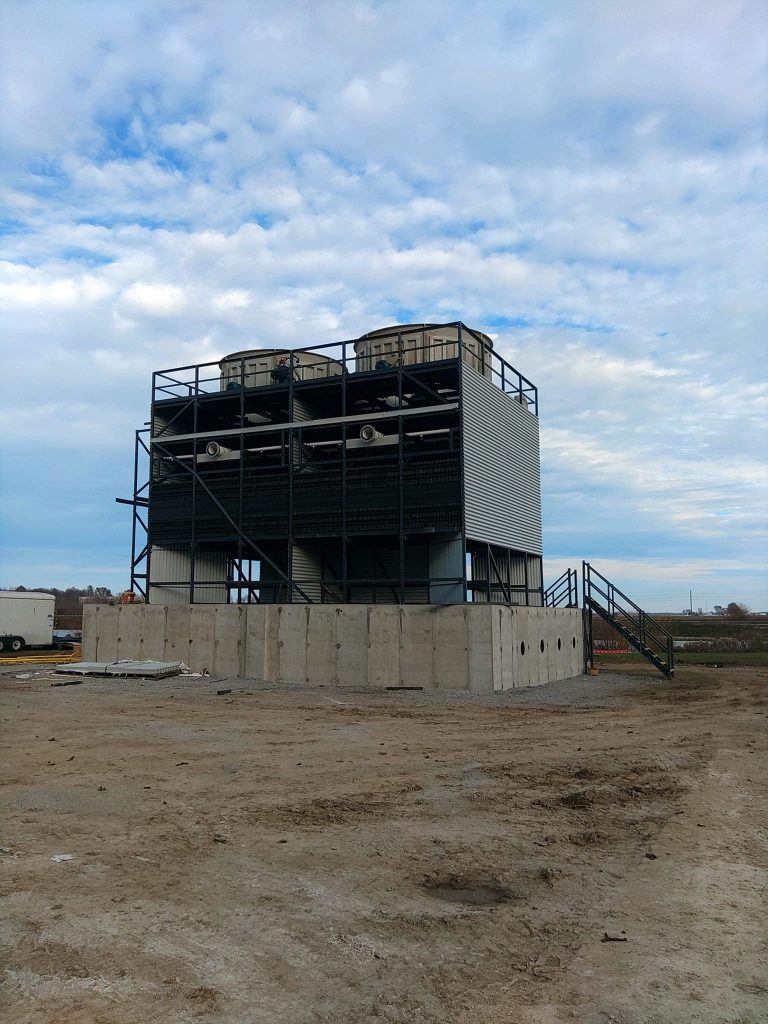Modular Cooling Tower: Components, Design & Benefits
A modular cooling tower is a prefabricated, scalable cooling system made up of multiple standardized units that can be combined to meet varying cooling demands. These are commonly used in HVAC, industrial processes, and data centers due to their flexibility, ease of installation, and energy efficiency.
1. Key Components of a Modular Cooling Tower
A. Structural & Framework
- Galvanized Steel/FRP (Fiberglass Reinforced Plastic) Casing – Provides corrosion resistance and structural support.
- Modular Panels – Interlocking sections for easy assembly and expansion.
- Support Structure – Base frame (often galvanized steel or pultruded FRP).
B. Heat Exchange System
- Fill Media (Film or Splash Type) – Maximizes water-air contact for efficient cooling.
- Drift Eliminators – Minimizes water loss by capturing droplets.
- Water Distribution System
- Spray Nozzles (PVC/FRP) – Evenly distributes water over fill media.
- Distribution Pipes (PVC/FRP/HDPE) – Supplies water to nozzles.
C. Airflow & Fan System
- Axial Fans (FRP/Aluminum Blades) – Provides forced or induced draft airflow.
- Fan Motor & Drive (VFD Optional) – Allows variable speed control for energy savings.
- FRP Fan Stack – Directs airflow efficiently.
D. Water Management
- Cold Water Basin (FRP/Stainless Steel) – Collects cooled water (may include sump).
- Inlet & Outlet Connections – For integration with chiller/process systems.
- Overflow & Drain Ports – Prevents flooding.
E. Controls & Accessories
- Control Panel (PLC-Based) – Monitors temperature, flow, and fan speed.
- Variable Frequency Drives (VFDs) – Optimizes energy use.
- Louvers (FRP/Aluminum) – Controls airflow and prevents debris entry.
- Access Doors & Ladders – For maintenance.
2. Types of Modular Cooling Towers
- Factory-Assembled Modular Units – Pre-built, shipped as complete units.
- Field-Erected Modular Towers – Assembled on-site for large capacities.
- Crossflow vs. Counterflow – Air/water flow direction variations.
- Induced Draft vs. Forced Draft – Fan placement differences.
3. Advantages of Modular Cooling Towers
◉ Scalability – Easily expandable by adding more modules.
◉ Space-Efficient – Compact design, ideal for rooftops or tight spaces.
◉ Energy-Efficient – VFDs and optimized airflow reduce power consumption.
◉ Low Maintenance – Corrosion-resistant materials (FRP, stainless steel).
◉ Quick Installation – Prefabricated modules reduce setup time.
4. Applications
- HVAC Systems (Commercial buildings, hospitals, malls)
- Data Centers (High heat load cooling)
- Industrial Processes (Power plants, refineries, manufacturing)
- District Cooling Plants
